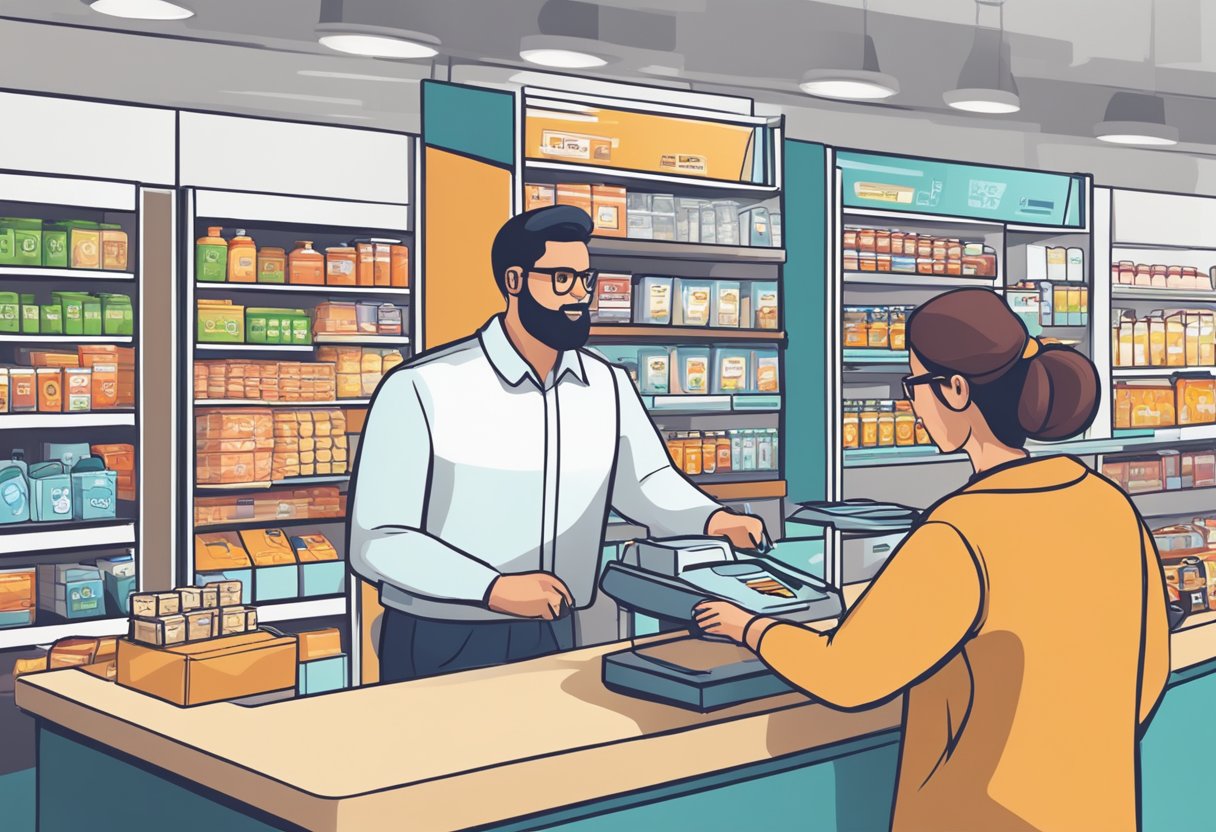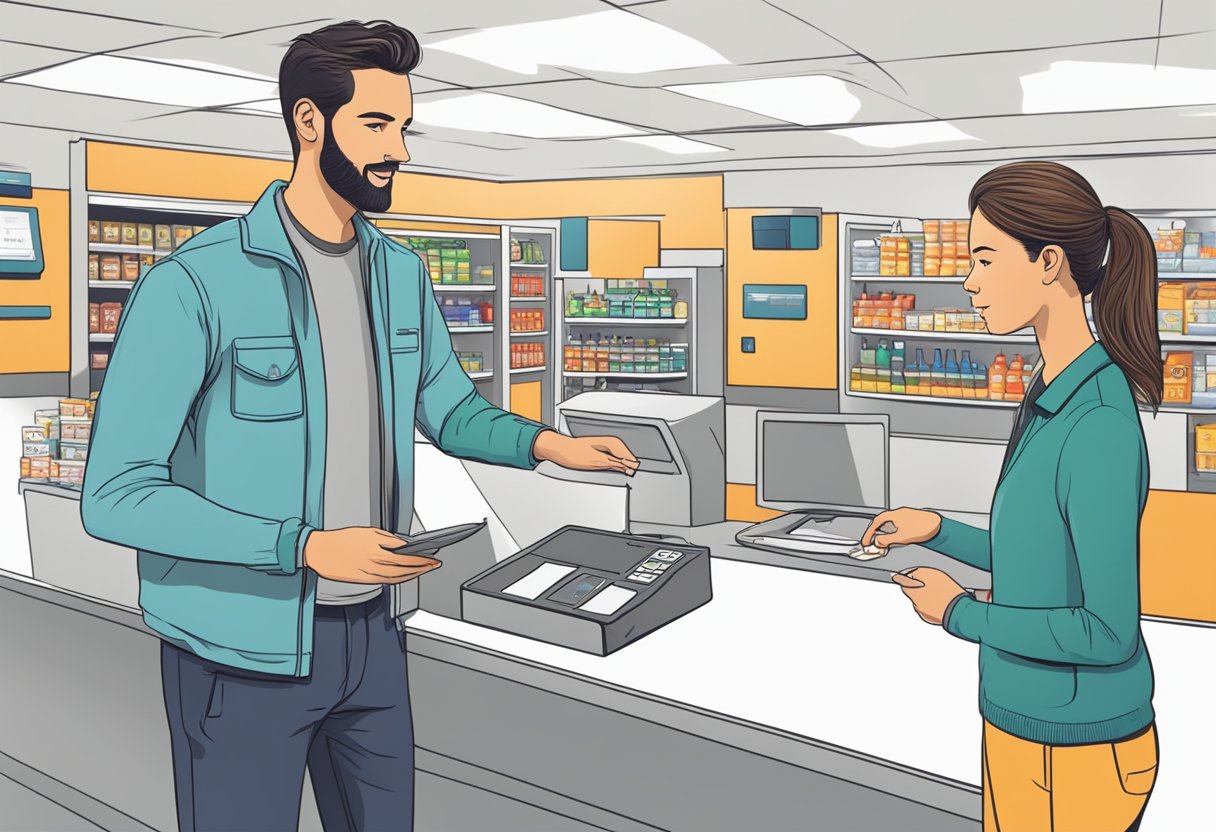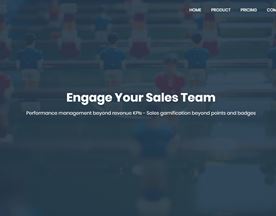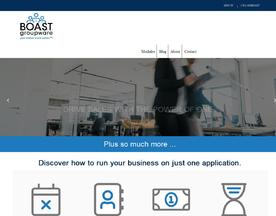Cross-selling and upselling are two techniques that businesses use to increase revenue and improve customer satisfaction. Although the terms are often used interchangeably, they have distinct meanings and strategies. Cross-selling is the practice of offering customers related products or services that complement their original purchase, while upselling is the practice of persuading customers to upgrade to a more expensive or premium version of the product or service they are considering.

Understanding the differences between cross-selling and upselling is important for businesses that want to maximize their profits and build strong relationships with their customers. Cross-selling can help businesses increase the average value of each transaction and create a more comprehensive solution for their customers. Upselling can increase revenue and profit margins, but it requires a delicate balance between offering value and not appearing pushy or manipulative. In this article, we will explore the benefits and challenges of cross-selling and upselling, as well as best practices for executing these techniques effectively.
Key Takeaways
- Cross-selling and upselling are distinct techniques that businesses use to increase revenue and improve customer satisfaction.
- Cross-selling can help businesses increase the average value of each transaction and create a more comprehensive solution for their customers, while upselling can increase revenue and profit margins.
- To execute cross-selling and upselling techniques effectively, businesses must balance offering value with avoiding appearing pushy or manipulative.
Understanding Cross Sell vs Upsell
Definitions and Differences
Cross-selling and upselling are two sales techniques that are often used interchangeably. However, there are important differences between the two. Cross-selling is the practice of offering customers related products or services to what they are already purchasing. For example, a customer buying a laptop may be offered a laptop bag or a mouse. On the other hand, upselling is the practice of offering customers a higher-end or more expensive version of the product or service they are already purchasing. For example, a customer buying a basic phone may be offered a more advanced model with additional features.
The main difference between cross-selling and upselling is the objective. Cross-selling aims to increase the value of the sale by offering complementary products or services, while upselling aims to increase the value of the sale by offering a higher-priced product or service.
The Importance in Sales Strategy
Cross-selling and upselling are important techniques in a sales strategy. They can increase revenue, improve customer satisfaction, and build customer loyalty. By cross-selling, businesses can offer customers additional options that they may not have considered, which can increase the value of the sale. By upselling, businesses can offer customers a premium product or service that they may not have been aware of, which can increase the value of the sale and improve the customer’s experience.
However, it is important to use cross-selling and upselling techniques appropriately and ethically. Pushing unnecessary products or services can damage the customer’s trust and result in negative reviews or loss of business. Therefore, businesses should focus on offering relevant and valuable options that meet the customer’s needs and preferences.
In conclusion, cross-selling and upselling are two important techniques in a sales strategy that can increase revenue and improve customer satisfaction. Understanding the differences between the two and using them appropriately can help businesses build long-term relationships with their customers.
Benefits to Businesses
When it comes to increasing revenue and customer loyalty, cross-selling and upselling strategies can be highly effective for businesses. Here are some of the benefits that can be achieved through these tactics.
Enhanced Customer Value
Cross-selling and upselling can help businesses increase the overall value that a customer receives from their products or services. By suggesting complementary or higher-end items, businesses can provide customers with a more complete solution to their needs. This can lead to increased customer satisfaction and loyalty, as well as a higher likelihood of repeat business.
Increased Revenue and Profit Margins
One of the most obvious benefits of cross-selling and upselling is the potential to increase revenue and profit margins. By encouraging customers to purchase additional items or upgrade to higher-end products, businesses can generate more sales without significantly increasing their costs. This can lead to higher profits and a stronger bottom line.
Improved Customer Retention
Cross-selling and upselling can also contribute to improved customer retention. By providing customers with a more comprehensive solution to their needs, businesses can increase the likelihood that customers will continue to use their products or services in the future. Additionally, by building strong relationships with customers through personalized recommendations and attentive service, businesses can create a sense of loyalty that can be difficult for competitors to match.
Overall, cross-selling and upselling can be powerful tools for businesses looking to increase revenue, enhance customer value, and improve customer retention. By using these strategies effectively, businesses can create a win-win situation for themselves and their customers.
Executing Cross-Sell and Upsell Techniques
Cross-selling and upselling are two effective sales techniques that can help businesses increase their revenue while providing more value to their customers. To execute these techniques effectively, businesses must identify opportunities, time them correctly, personalize them, and utilize customer data and feedback.
Identifying Opportunities
Identifying cross-selling and upselling opportunities is the first step in executing these techniques. Businesses can identify these opportunities by analyzing customer behavior, purchase history, and preferences. By doing so, businesses can offer products or services that complement the customer’s existing purchase or suggest an upgrade to a higher-end product.
Effective Timing and Personalization
Timing is crucial when it comes to cross-selling and upselling. Businesses should time their offers when the customer is most likely to be receptive to them. For example, offering a complementary product or service during the checkout process can increase the chances of a cross-sell. Personalization is also important as it helps businesses tailor their offers to the customer’s specific needs and preferences.
Utilizing Customer Data and Feedback
Utilizing customer data and feedback can help businesses execute cross-selling and upselling techniques more effectively. By analyzing customer data, businesses can identify patterns and behaviors that can help them offer more relevant products or services. Customer feedback can also provide valuable insights into what products or services customers are interested in and what they are not.
In conclusion, executing cross-selling and upselling techniques requires businesses to identify opportunities, time them correctly, personalize them, and utilize customer data and feedback. By doing so, businesses can increase their revenue while providing more value to their customers.
Optimizing the Customer Journey

Creating a seamless customer journey is crucial for any business looking to increase revenue and build long-term relationships with its customers. Cross-selling and upselling are two effective techniques that can be used to optimize the customer journey.
Seamless Checkout Experiences
One of the most critical stages in the customer journey is the checkout process. A seamless checkout experience can make all the difference in whether a customer completes their purchase or abandons their cart. To optimize the checkout experience, businesses should ensure that the checkout process is straightforward, easy to navigate, and secure. Offering multiple payment options can also help to increase customer satisfaction and reduce cart abandonment rates.
Post-Purchase Upsells
Post-purchase upselling is an effective technique that can be used to increase revenue and build long-term relationships with customers. After a customer completes a purchase, businesses can offer complementary products or services that enhance the original purchase. These upsells should be relevant to the customer’s original purchase and add value to their overall experience. By offering post-purchase upsells, businesses can increase customer satisfaction and loyalty while also generating additional revenue.
Building Long-Term Relationships
Building long-term relationships with customers is essential for any business looking to succeed in the long run. Cross-selling and upselling can be used to build these relationships by offering personalized recommendations and relevant products or services. By understanding their customers’ needs and preferences, businesses can create a more personalized experience that fosters loyalty and trust.
In conclusion, optimizing the customer journey is critical for businesses looking to increase revenue and build long-term relationships with their customers. By focusing on creating a seamless checkout experience, offering post-purchase upsells, and building long-term relationships, businesses can enhance the overall customer experience and drive growth.
Leveraging Digital Marketing

Digital marketing is an essential tool for businesses looking to increase their revenue through cross-selling and upselling. By leveraging digital marketing, businesses can effectively communicate with their customers and promote relevant products and services.
Email Marketing Campaigns
Email marketing campaigns are a powerful tool for cross-selling and upselling. By sending targeted emails to customers, businesses can promote related products and services that the customer may be interested in. For example, if a customer has recently purchased a laptop, the business can send an email promoting laptop accessories such as a mouse or a laptop bag.
To make email marketing campaigns effective, businesses should segment their email lists based on customer behavior and preferences. This allows businesses to send targeted emails to specific groups of customers, increasing the likelihood of a successful cross-sell or upsell.
Targeted Promotions on Product Pages
Targeted promotions on product pages are another effective way to cross-sell and upsell. By promoting related products on a product page, businesses can encourage customers to purchase additional items. For example, if a customer is looking at a pair of shoes, the business can promote shoe care products or shoe accessories on the same product page.
To make targeted promotions effective, businesses should use data and analytics to understand customer behavior and preferences. This allows businesses to promote products that are relevant to the customer, increasing the likelihood of a successful cross-sell or upsell.
Content Marketing Strategies
Content marketing strategies such as blog posts and articles can also be used to cross-sell and upsell. By creating content that is relevant to the customer, businesses can promote related products and services. For example, if a business sells kitchen appliances, they can create blog posts about cooking tips and recipes, and promote related products such as cookware and utensils.
To make content marketing strategies effective, businesses should create high-quality content that is informative and engaging. This helps to build trust with the customer and increases the likelihood of a successful cross-sell or upsell.
In conclusion, leveraging digital marketing is essential for businesses looking to increase their revenue through cross-selling and upselling. By using email marketing campaigns, targeted promotions on product pages, and content marketing strategies, businesses can effectively communicate with their customers and promote relevant products and services.
Case Studies and Examples

Success Stories from Industry Giants
When it comes to cross-selling and upselling, some of the biggest players in the industry have set a benchmark for others to follow. One such example is Amazon, which has been successfully implementing cross-selling and upselling strategies for years. Amazon’s recommendation engine is a prime example of how the company cross-sells and upsells its products to its customers. By analyzing the customer’s purchase history and browsing behavior, Amazon recommends products that the customer is likely to buy, increasing the chances of a sale.
Another giant in the industry, Apple, has also been successful in cross-selling and upselling its products. Apple’s strategy involves bundling its products together. For instance, when a customer buys an iPhone, Apple recommends buying AirPods or an Apple Watch to go with it. This strategy not only increases the average order value but also enhances the customer experience by providing a complete ecosystem of products.
Small Business Strategies
Cross-selling and upselling are not just limited to large corporations; small businesses can also benefit from these strategies. One example is a local coffee shop that offers a loyalty program. The coffee shop incentivizes customers to buy more by offering discounts and free drinks for reaching certain purchase thresholds. This strategy not only encourages customers to buy more but also increases customer loyalty.
Another example is a boutique clothing store that cross-sells its products by offering styling services. By providing a personalized styling service, the boutique can recommend products that complement the customer’s style and wardrobe, increasing the chances of a sale.
In conclusion, cross-selling and upselling are effective strategies that can benefit businesses of all sizes. By analyzing customer behavior and offering personalized recommendations, businesses can increase their sales and enhance the customer experience.
Challenges and Best Practices

Overcoming Common Obstacles
Cross-selling and upselling are both effective strategies for increasing revenue and customer loyalty. However, there are some common obstacles that businesses may face when implementing these strategies. One of the main challenges is identifying the right products or services to offer to customers. This requires a deep understanding of customer needs and preferences, as well as the ability to anticipate their future needs.
Another challenge is ensuring that cross-selling and upselling efforts are not perceived as pushy or aggressive. Customers may feel uncomfortable if they are constantly bombarded with offers, especially if they are not relevant to their needs. To overcome this obstacle, businesses should focus on building relationships with their customers and providing personalized recommendations based on their purchase history and preferences.
Adopting Industry Best Practices
To maximize the effectiveness of cross-selling and upselling strategies, businesses should adopt industry best practices. One of the most important best practices is to focus on customer needs and preferences. This requires businesses to gather and analyze customer data, such as purchase history, browsing behavior, and feedback. By understanding customer needs, businesses can offer relevant and personalized recommendations that are more likely to result in a sale.
Another best practice is to use targeted marketing and communication strategies. This involves segmenting customers based on their needs and preferences and tailoring marketing messages and offers accordingly. For example, businesses can use email marketing campaigns to promote relevant products or services to customers who have previously shown interest in those areas.
Finally, businesses should focus on providing exceptional customer service throughout the cross-selling and upselling process. This includes being responsive to customer inquiries and concerns, providing clear and accurate information about products and services, and following up after a sale to ensure customer satisfaction.
Overall, businesses can overcome common obstacles and maximize the effectiveness of cross-selling and upselling strategies by adopting industry best practices and focusing on customer needs and preferences.
Frequently Asked Questions

What are the key differences between cross-selling and upselling strategies?
Cross-selling is the practice of offering customers complementary products or services that are related to their initial purchase. Upselling, on the other hand, involves encouraging customers to purchase a higher-end or more expensive version of the product or service they are considering. While both strategies aim to increase revenue, cross-selling is focused on expanding the customer’s purchase, while upselling is focused on increasing the value of the purchase.
How can businesses effectively identify opportunities for cross-selling and upselling?
To identify opportunities for cross-selling and upselling, businesses should analyze their customers’ purchasing habits and preferences. This can be done by tracking customer data and using it to create personalized recommendations. Additionally, businesses can train their sales staff to actively suggest complementary products or services during the sales process.
What are some successful examples of cross-selling in the retail sector?
One successful example of cross-selling in the retail sector is Amazon’s “Frequently Bought Together” section, which suggests complementary products to customers based on their purchase history. Another example is McDonald’s offering customers the option to add fries and a drink to their burger order for a discounted price.
Can you provide examples of how upselling can be implemented in a service-based industry?
In a service-based industry, upselling can be implemented by offering customers premium or additional services. For example, a hotel may offer customers an upgrade to a luxury suite or a spa package. A car rental company may offer customers the option to upgrade to a higher-end vehicle.
What are the main benefits that companies experience when employing cross-selling techniques?
The main benefits of employing cross-selling techniques include increased revenue, improved customer satisfaction, and strengthened customer loyalty. By offering customers complementary products or services, businesses can increase the value of each purchase and provide a more personalized shopping experience.
How does the cost of implementing cross-selling compare to upselling initiatives?
The cost of implementing cross-selling and upselling initiatives can vary depending on the specific strategies used. However, in general, cross-selling initiatives tend to be less expensive than upselling initiatives. This is because cross-selling typically involves offering customers complementary products or services that are already part of the business’s inventory, while upselling may require additional investment in higher-end products or services.















